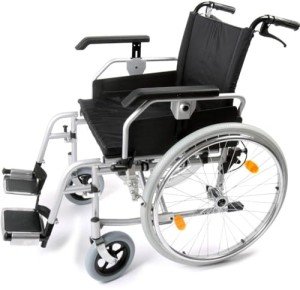Ten Myths About Bariatric Wheelchair 24 Inch Seat That Aren't Always True

Bariatric Wheelchair Seat Width
Seat Width

Having the appropriate seat width is crucial to wheelchair users who invest longer durations in their chairs. Too narrow a seat will trigger pressure on the hips and thighs which might result in sores or pressure points. Having too large a seat can likewise make it hard for the user to reach the hand rims to propel themselves or maneuver in little areas.
To determine the appropriate seat width an individual would sit on a chair typically and have their measurement taken throughout their lap at the best point which is typically their hips. A wheelchair measuring tape can be used to determine this, but a backyard stick is preferred as it avoids individuals from covering the tape around their hips which would give an unreliable result.
Full File is 16" (narrow grownup), 18" (standard adult), and 20" (broad grownup). For bariatric clients, a 24" seat is readily available. This durable additional wide bariatric wheelchair from Medline features swing-away footrests, a carbon steel frame with rust- and chip-resistant chrome plating, and easy-to-clean vinyl upholstery. It has a weight capacity of 500 pounds.
Seat Depth
Generally, the seat depth of a bariatric wheelchair was included 2" to the measurement taken at the user's widest point (usually their hips). This was indicated to accommodate additional layers of clothing that might be used throughout cold weather condition. Nevertheless, this practice is ending up being less common as wheelchair users have the ability to invest more time inside and are not wearing long coats. This makes the seat depth of a chair lesser when picking a bariatric wheelchair. Nevertheless, it is still essential to select a choice that uses appropriate assistance for larger users.
The Medline folding additional large bariatric manual wheelchair features a comfy 24" seat width and a heavy-duty slide tube silver vein frame. It likewise has an adjustable axle and tool-free raising legrests.
Seat Height
When it concerns determining the right wheelchair seat width you must constantly determine from the user's widest point which is typically their hips. You will likewise need to think about whether the user is going to be wearing a winter season coat as this may add 2" to the width required.
When a wheelchair is in use it should just be run on level surface areas with the wheel locks fully engaged. This is to prevent the chair from being able to move inclines that are 10 degrees or higher. It is also crucial to keep in mind that any activity that may shift the center of mass in the chair need to be done with care. This includes reaching for products that need the individual to lean out of their seat or attempting to stand from it.
Whenever you have the chair in use it is suggested that you routinely check it for damage and oil any locations that are considered necessary. For instance, the casters need to be oiled by eliminating the caster fork and using a multi-purpose grease to apply to the caster stem bearings. Likewise, the foot plates can be changed by loosening up the bolt and after that moving them to the desired position. This permits the feet to sit conveniently on the footplate and prevents any pressure points from forming. This can be extremely uneasy for the user and if left ignored, can lead to pressure sores.
Weight Capacity
Bariatric wheelchairs are designed to support more weight than basic wheelchairs. This makes them tougher and better geared up to deal with falls. They are also normally bigger and broader, making them less maneuverable in tight spaces than basic wheelchairs. They need automobiles with special ramps and lifts to pack them, in addition to motorists who know how to best transport them from one area to the next.
When choosing a wheelchair, consider its weight capacity as it will be the main determining aspect in whether it will accommodate your guest's requirements. The weight capacity of the chair is often listed as a fixed load, indicating that it indicates the amount of weight the chair can conveniently hold while standing still. However, some manufacturers also note an active load that is based upon a drop test and can simulate the effect of someone sitting down in the chair. This might be a more reputable measurement of the weight limit, depending on your requirements.
If you prepare to carry out activities that move your center of gravity in the seat (such as reaching for objects), make certain to have front casters pointed in a forward direction and wheel locks engaged so the chair will not tip over. Also, inspect that casters are oiled regularly to prevent excessive wear and abrasions. The lubrication procedure includes removing the fork, separating the caster from the wheel, and greasing the caster stem bearings with top quality multi-purpose grease.
